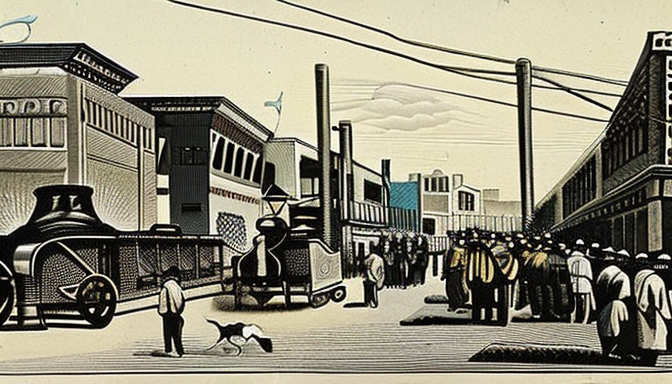Karachi has a rich history, transforming from a humble fishing village into a vibrant metropolis. This journey spans centuries, marked by significant events and cultural influences that shaped the city. Imagine a time when Karachi was just a small settlement, where fishermen cast their nets into the Arabian Sea. Over the years, this quaint village began to grow, influenced by trade routes that connected it to distant lands.
In the early days, the city’s location was its greatest asset. It became a hub for traders from various cultures, including the Persians, Arabs, and later the British. Each group left its mark, adding layers to Karachi’s identity. Trade flourished, and with it, the population began to swell. The arrival of new communities brought diverse languages, cuisines, and traditions. This melting pot of cultures is what makes Karachi so unique today.
Fast forward to the 19th century, and Karachi was on the brink of industrialization. The British established it as a major port, leading to an economic boom. Factories sprang up, and people flocked to the city in search of work. This rapid urbanization changed the landscape dramatically. The once quiet streets buzzed with activity, and Karachi began to take shape as a bustling urban center.
Throughout the 20th century, Karachi continued to evolve. It became a focal point for migration, attracting individuals from all over Pakistan and beyond. Each wave of newcomers contributed to the city’s dynamic culture, making it a true representation of diversity.
In conclusion, Karachi’s transformation is a fascinating story of resilience and growth. From its humble beginnings to its current status as a major city, Karachi reflects the complex tapestry of history that continues to influence its future.
Early Beginnings of Karachi
Karachi’s story begins as a modest fishing village around the 18th century. Picture a serene coastline, where local fishermen cast their nets, hoping for a bountiful catch. This little settlement, known as Kolachi, was not just a place to fish; it was a hub of trade and cultural exchange. The strategic location along the Arabian Sea made it a prime spot for merchants traveling on ancient trade routes.
As time rolled on, Karachi saw the arrival of various cultures. Traders from Persia, Arabia, and even further afield brought their customs and languages. This melting pot of influences laid the groundwork for a vibrant community. By the early 19th century, the village began to flourish. The British East India Company recognized its potential and established a military outpost here. This was a pivotal moment. Suddenly, Karachi transformed from an obscure fishing village into a bustling port city.
With the influx of people came the need for infrastructure. Roads were built, and markets sprang up. The population grew rapidly, attracting diverse groups seeking opportunities. By the mid-1800s, Karachi was officially declared a municipality. This marked the beginning of its journey toward becoming a major urban center. The blend of cultures, languages, and traditions created a unique identity that still resonates today.
In summary, Karachi’s early days were defined by its natural resources and strategic location, which attracted traders and settlers alike. The transformation from a quiet fishing village to a vibrant port city set the stage for the industrial growth that would follow. The seeds of change were sown, and Karachi was ready to embrace its destiny.

Industrial Growth and Urbanization
The story of Karachi’s industrial growth is nothing short of fascinating. In the late 19th century, the city began to transform from a sleepy fishing village into a thriving hub of commerce and industry. This shift was fueled by the establishment of key trade routes, which connected Karachi to various parts of the world. As ships began to dock more frequently, the city started to bustle with activity.
By the early 20th century, Karachi was witnessing rapid urbanization. Factories sprang up, and the demand for labor skyrocketed. This influx of job opportunities attracted people from all over the region. Imagine a once quiet village suddenly filled with the sounds of machinery and the chatter of workers! It was a time of excitement and change.
Several pivotal events marked this era:
- 1901: The first census recorded a population of over 100,000, showcasing the city’s growing appeal.
- 1920s: The establishment of the Karachi Port Trust led to increased shipping and trade activities.
- 1947: The partition of India brought a massive influx of refugees, further diversifying the city’s population.
These developments didn’t just change the landscape; they reshaped the very fabric of Karachi. The city became a melting pot of cultures, ideas, and aspirations. People from different backgrounds came together, each adding their unique flavor to the city’s identity.
Today, Karachi stands as a testament to this incredible journey. It’s a city that never sleeps, a place where the past meets the present in vibrant ways. With its rich history of industrial growth and urbanization, Karachi continues to evolve, making it one of the most dynamic cities in the world.
Frequently Asked Questions
- What was Karachi like in its early days?
Karachi started as a small fishing village, bustling with local fishermen and traders. Imagine a serene coastline with boats bobbing gently in the water, where the community thrived on the catch of the day!
- How did industrialization change Karachi?
Industrial growth in the 19th and 20th centuries transformed Karachi into a vibrant urban center. Picture factories springing up, drawing people from various backgrounds, all eager for new opportunities and a better life!
- What cultures have influenced Karachi’s development?
Over the centuries, Karachi has been a melting pot of cultures. From traders to immigrants, each group has left a mark, making the city a unique tapestry of traditions and lifestyles.
- Why is Karachi considered a metropolitan city today?
Today, Karachi is a bustling metropolis due to its economic significance, diverse population, and urban infrastructure. It’s like a living organism, constantly evolving and adapting to the needs of its residents!